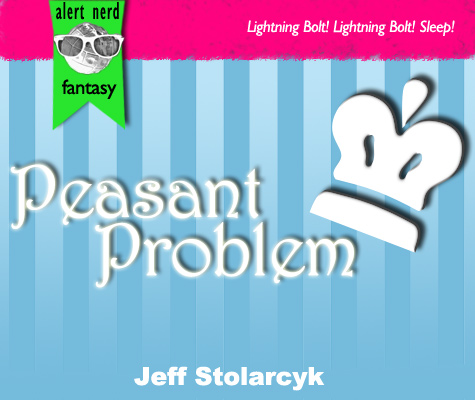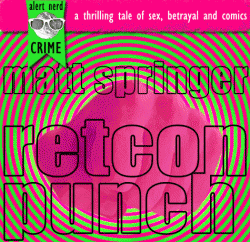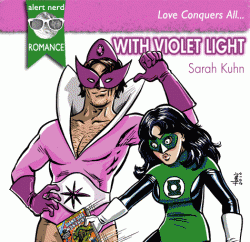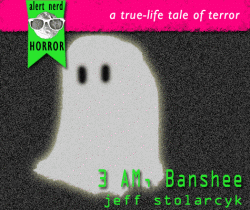Reconstruction of the Fables
Reconstruction of the Fables
Mar 29(WARNING: If you haven’t read Fables yet, and hope to someday, and you would NOT like spoilers for your reading, please surf elsewhere. Thank you and godspeed.)
There’s a great old Alan Moore essay, the foreword to one of the myriad editions of Frank Miller’s Dark Knight Returns, where he talks about how DKR is so great because it gives the Batman mythology an ending. Maybe not the only ending Batman will ever get (and as we know, with Dark Knight Strikes Back Miller essentially took away the very ending he gave the character), but an ending nonetheless.
Myths require an ending, Moore says, to truly resonate. Robin Hood has the lone arrow marking his grave; the Norse gods have their Ragnarok. Thanks to Miller, and even in spite of his own sequel, Batman will always have that hand around Superman’s throat, the quiet tick of a heart reawakening in the grave, and a new empty cave full of heroes and potential.
I think about this essay often because unlike the world of endless corporate superhero universes, more and more comics are giving us stories with endings. Not just miniseries or graphic novels, but long form stories in the tradition of Sandman, perhaps the first modern comic to adopt this template. Eighty issues, many stories and characters; spinoff miniseries and graphic novels and one-shots. But eventually, an ending.
I like endings. I hate endings. Endings can be the capstone Moore wrote about, the final ringing note in a perfectly-played comics symphony. Yet they suck because…well, then things are over, and that’s not fun.
The massive uberarc of Fables came to its natural conclusion in issue 75, when the forces of Fabletown emerged victorious over the diabolical Adversary, who had conquered countless worlds with his army of wooden soldiers, trolls, and other assorted nasties. Since that issue, the series has continued; I think its forward momentum has not. There’s the hint of a new “big bad” in the form of Mister Dark, and there’s been a few coda-type stories; what there hasn’t been is enough of a story hook to maintain the same level of interest I had in the series before the defeat of the Adversary.
That’s the double-edged sword of storytelling on the installment plan; eventually, the installments either get paid off, like in Sandman or Starman or other titles some of which I’m sure also end in “-man.” Or there’s no ending at all, like the majority of serialized comic book stories, and we just go on repeating the same or similar types of adventures, until we grow out of it or we die. Or both.
Fables in particular built up the Adversary as the ultimate Big Bad, and his defeat as the ultimate climax to a rich, layered story full of grand gestures, subtle characterizations, and the brilliant bending of genre and archetypes in the service of a new story about very old characters. So it’s not surprising that the post-Adversary era of the title has felt like a bit of a letdown. It’s also not surprising, in a sense, that everyone involved would want to continue the title past its logical endpoint; writer Bill Willingham clearly loves these characters, as do readers like myself, and for DC/Vertigo, it’s a very successful signature book for the imprint, with adaptation potential written all over it, even if the stars haven’t aligned on that front yet.
So how do you solve a problem like Fables? I think one clue lies in the most recent trade paperback of the series, The Great Fables Crossover, which collects not just issues of Fables but issues of its spinoff title Jack of Fables and a special three-issue miniseries, The Literals, published just to fill in story blanks for the crossover.
Jack of Fables has always been a great spinoff from page one because it never tried to emulate the success of the original book. Willingham and co-writer Matthew Sturges took one very popular character and moved him out into the world beyond Fabletown, concocting a series full of humor and metacommentary. Jack has got to be the only comics character (ever, maybe?) who begins and ends each issue talking straight at the reader. It’s not so much fourth-wall breaking as it is a complete ignorance that there ever was a fourth wall to begin with. This fits perfectly into the Fables universe, where the stories we tell each other over generations actually live up the street.
With The Great Fables Crossover, this tonal fresh air blew through the main Fables book as Jack took up occupancy there for a few issues while Snow White and Bigby visited Jack’s own book. Rather than giving us a more “serious” look at Jack or a more “wacky” approach to Snow & Bigby, the whole damn story is one big action romp through metafiction, with our heroes tasked with dispatching the Author of All Things before he can rewrite the universe. The author is aided by Genres like Western, Noir, and Fantasy, while the fables battle alongside actual fiction-crafting concepts, such as Mr. Revise and the Page Sisters.
Fables has always been a funny book, but the overriding tone has been one of sweeping storytelling, of classic characters engaged in vast world-spanning adventures, or suffering under the burden of hearts that have ached with longing for centuries. It’s a tone that worked when the many shorter stories all built straight toward a grand climax.
Maybe now that the Big Bad has been dispatched, Fables could lighten up a bit? Not become a comedy book like Jack of Fables, but just give us some shorter, lighter stories, where the stakes aren’t the world we know and the thousands we don’t, but much smaller. As Willingham has shown us time and again in all of his Fables books, there’s character to be mined not just from big stories with noble sacrifices and bold maneuvers, but in the smaller braveries we enact every day, whether we’re Fables or just regular folks.
I’m in this for the long haul, but I’m ready for Fables to seize me again by the throat and demand my attention. I started reading it late, so catching up at first was compulsive, one of those great orgies of reading that you get when you discover something incredible that’s been going on for years. I want to have that feeling again, that I need to own every trade the day it’s released and read it that night before I sleep. I have a feeling Fables can turn it around, if Willingham takes a legitimate breather from the Uberarc, and moves past his own ending toward a legitimate new beginning.












I really enjoyed your review as your POV while reading the Great Fables Crossover was very different from mine. Mine was much more from a writer’s POV as a meta-narrative about writing and I found it disappointing & trite. I’m glad your review gave me another way to look at it. However, I found it interesting that we both arrived at the same conclusion: there needs to be smaller stories to reconnect with the characters and the world.
I do see what you’re saying, especially the Genre characters, which were often very on-the-nose. to me, the whole thing moved at such a crisp clip that it was easy to overlook the clunky bits. but then, I’m easily won over by any book featuring Willingham & Sturges’ Babe the Blue Ox. I relate to him as a frustrated creative type.